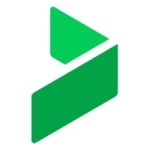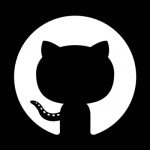What is our primary use case?
We run thousands of automations.
What is most valuable?
The reason that ServiceNow is as good as it is, and opposed to Remedy, Cherwell, and HP OpenView, is that ServiceNow was the first IT service management platform or enterprise.
ServiceNow was the first true enterprise to service management platform. They were the first to understand that a request is a request and service is service.
ServiceNow goes back internationally a long time ago when they were Fuji. ServiceNow releases are alphabetical. My experience started with Fuji, and they are on the Orlando release now. Even back then, they were able to put any process into ServiceNow, even if it wasn't and IT process, and have it managed through the platform.
What needs improvement?
Security needs some improvement. The governance, security incident management, cloud management, and the security module are getting better.
Service mapping could be less complicated. The configuration, and running it appropriately, but that's a difficult thing to do overall.
It needs to be more cost-effective because it can be pricey.
I would love to see ServiceNow create a solid mid-market entry point for it. They tried it in the past and it failed. That was ServiceNow Express.
For how long have I used the solution?
I have been using ServiceNow for over a decade.
What do I think about the stability of the solution?
ServiceNow is incredibly stable.
What do I think about the scalability of the solution?
This solution is scalable to a point. Once you get as large as the Department of Veterans Affairs you will have some issues, but it scalable.
We have 3000 people here in our company. Anyone who is in IT is using ServiceNow.
How are customer service and technical support?
I haven't contacted technical support.
If you are as close to out-of-the-box as you need to be then you won't have any issues at all with ServiceNow.
How was the initial setup?
ServiceNow is the least complex of all of the platforms available.
When I worked at the bank they went from zero to running it within three months. At that time when dealing with Remedy or other legacy systems, that was unheard of to go from nothing to running in three months.
With one of our customers, we had it up and running in one month.
We have seven members to maintain ServiceNow. They are developers, senior developers, and the head of service management.
What's my experience with pricing, setup cost, and licensing?
The mandatory minimum is US$ 20,000 for licensing. They have a three-year cycle. I am not sure if it works out to be $60,000 for three years or if it's $20,000 for the three years.
It's mainly for licensing. The more that you use it and the more it goes to other areas in your organization, the more licensing you will have to pay.
There may be some who look at this and use it for the HR service delivery or they could use another HR application that looks cheaper, but they will be missing the point of having all of the information on a single platform.
What other advice do I have?
I manage an automation orchestration team. The focus of my team is external, not internal. The company uses ServiceNow. We are one of the largest and older consumers of ServiceNow. The members of my team have ServiceNow practice, infrastructure automation practice, could management platforms, containers practice, and DevOps.
Our team is focused on helping other organizations adopt and adapt to ServiceNow.
ServiceNow is in the cloud, it's basically remedy in the cloud. ServiceNow doesn't get deployed unless you are a Federal Agency because they have their own data centers. ServiceNow only allows Federal Agencies to have their own instant data Center.
Make sure that you are big enough to afford it. If you have a small IT department, then ServiceNow is not for you. The problem is that you won't be able to afford it. You must be a mature enough and a large enough IT organization to start using it.
It doesn't just do IT things, it does more than that.
Make sure that you configure and not customize.
I would rate this solution an eight out of ten.
Which deployment model are you using for this solution?
Public Cloud
Disclosure: My company has a business relationship with this vendor other than being a customer. Partner




















